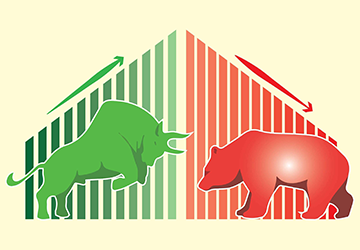Understanding The Stock Market Jargon: A Glossary For Beginners
The stock market attracts people of all ages and has become a popular source of income and return for the masses. More and more people are being introduced to the stock market.
Many novices find various terms and phrases used over and over again. The stock market has a ton of jargon, all of which can overwhelm a beginner.
If you are new to the stock market and want to learn and understand this stock market jargon, then this article is for you! So, hurry up and let's learn more stock market vocabulary.
A Glossary For Beginners
Stocks: Whenever a company goes public for investment, they allocate a market share of the stock. These shares are then traded on the real-time market.
Index: A collection of stocks with specific criteria is called an index. These indices can be based on industry, market capitalization, volatility, etc.
Brokers: Brokers used to be agents, but now they are big corporations. A broker is more than just an intermediary that buys and sells stocks on your behalf.
Bull market: When the overall market of a stock shows an upward trend for several consecutive days, it is called a bull market.

Bear market: The opposite of a bull market is a bear market. In a bear market, the trend is also hostile and aggressive.
Blue-chip stock: When established companies are listed on the public market (i.e. stock exchanges), their stocks are known as blue chips.
Penny Stocks: Stocks of small companies worth less than $5 per share are called penny stocks.
Dividend: Shareholders receive a tip when a company makes a profit from the business, which is nothing more than a percentage of the profits earned by the company. In this way, shareholders also benefit from the profits.
Market Capitalization: The value of a company is measured by its market capitalization. You can calculate the current market price and multiply it by half of the outstanding total to get the stock's market capitalization
Price-to-Earnings Ratio: The P/E ratio provides information about a company's share price relative to its earnings. This is calculated by dividing the company's stock by its earnings per share.
Volume: The number of times a stock is traded per day is called volume. The higher the book, the greater the liquidity.
IPO: Stands for Initial Public Offering. It offers an IPO when a company goes public, which means it offers shares to the public.
Yield: The rate of return on a particular investment is known as the rate of return.
Market order: Use a market order if you want to place an order during market hours and have it executed at a real-time price.
Limit Order: A limit order is used when you want to place an order at a specific price during market hours. With these orders, you can place an order at a predefined price; whenever that price is reached, the order will be executed automatically.
Stop Order: A stop loss order is an important term in the stock market. This is a price when you need a clear view of the market and want to sell a position with limited risk; use a stop loss order. With this order, you place an order below the current price, as a stop loss. This stop loss order should always be used to avoid significant losses.

Cost Price: The cost price is the highest price a buyer is willing to pay for a particular stock. You can see this in the list of market orders.
Ask Price: The asking price is the lowest price a seller is willing to accept for a particular stock.
Spread: The difference between the buying price and the average amount is called the spread, which is mainly used for FNO transactions.
Blue-Sky Rules: These are federal rules that protect and oversee the sale of securities. These rules protect investors, traders, and retailers from fraudulent activity on exchanges.
Day trading: If you buy everything on the same day or hold a position that needs to be sold/exited, the profit or loss will be reversed. All trades are made every market hour, which is a highly profitable, high risk style of trading.
Margin: In day trading, brokers typically provide leverage to traders' capital, allowing them to buy stocks 10 to 20 times more valuable. This helps traders expose themselves to higher risks and earn high returns.
Conclusion
You are now familiar with some of the most popular stock market jargon as beginners are always advised to keep learning and improving. The terms presented are the basics, providing a solid foundation for understanding the fundamentals of investing and trading.


